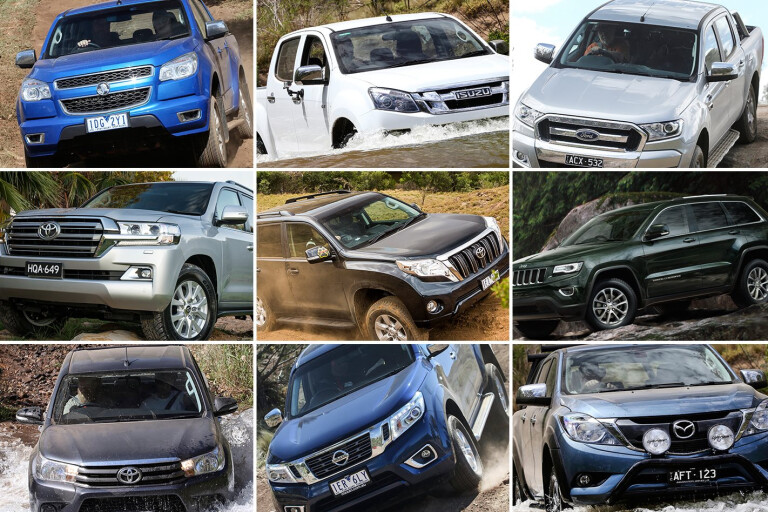
New cars, SUVs and commercial vehicles in Australia set a new record of 1.15 million sales in 2015, a 1.7 per cent increase on the previous record, set in 2013, and a 3.8 per cent increase on the 2014 sales.
This increase is largely due to the ever-growing popularity of SUVs (4x4 and soft roaders), which continue to close in on the sales lead of conventional passenger cars.
Meanwhile, utes continue to dominate the 4x4 market, even if sales of the Toyota Hilux and the Nissan Navara – both of which were at the end of long product cycles in 2015 – decreased from 2014 to 2015. All the other popular 4x4 utes, led by the Ford Ranger, increased sales in 2015, compared with what they achieved in 2014.
Only three 4x4 wagons, the Toyota Prado, Land Cruiser 200, and Jeep Grand Cherokee made it into the top-end for 2015, as they did in 2014, but only the LC200 increased its sales. Let’s take a closer look...
1. TOYOTA HILUX People’s Choice
Toyota’s Hilux is Australia’s most popular 4x4 and has been for the past 11 years.
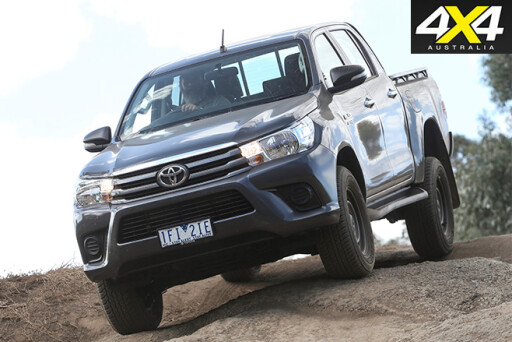 Despite dropping 1380 sales from 2014 and selling an out-going model for most of the year, the Hilux held its number-one 4x4 sales spot for 2015. If you add sales of 4x2 models, the Hilux was Australia’s third most popular new vehicle overall last year, small passenger cars included.
Despite dropping 1380 sales from 2014 and selling an out-going model for most of the year, the Hilux held its number-one 4x4 sales spot for 2015. If you add sales of 4x2 models, the Hilux was Australia’s third most popular new vehicle overall last year, small passenger cars included.
The Hilux has been the most popular new vehicle overall in Western Australia for the past eight years, Queensland for the past nine years and the Northern Territory for the past 15 years. But where does that leave the new Hilux, which arrived just as 2015 came to a close? In December, Hilux 4x4 sales were just 11 units ahead of the increasingly popular Ford Ranger, so the sales supremacy fight will be on in 2016.
The new Hilux comes in a bigger range that includes 19 4x4 models, five more than before.
For the first time in Hilux history there are two diesel engines, in addition to the 4.0-litre petrol V6 carried over from the previous-gen Hilux. Toyota now offers the V6 in both SR- and SR5-spec, where previously it was only available as an SR5. Given the low cost of fuel and that none of the other popular utes offers a petrol engine, this might be a smart move by Toyota.
What may work against the Hilux, especially in comparison to the Ranger, is that it now has a smaller engine than before, down from 3.0 litres to 2.8 litres, while the new base-spec Workmate has an even smaller engine, a 2.4.
In designing the new Hilux, Toyota’s engineers haven’t tried to build a bigger ute like the Ranger or the Volkswagen Amarok, but instead have set about producing a better version of what they had before.
While the new Hilux is quieter and more refined on the road, the big improvement is seen off-road, thanks to more ground clearance, enhanced rear-wheel travel, and a far more effective traction control system.
It also looks like Toyota has an up-spec Hilux in the wings, which makes sense if you look at the current line-up, where the supposedly mid-spec SR is more like a Workmate but with the 2.8 engine.
Specs: Toyota Hilux SR
Engine: 2.8-litre 4-cyl turbo diesel
Max Power/Torque: 130kW/450Nm
Gearbox: six-speed automatic
4X4 System: dual-range part-time
Kerb Weight: 2080kg
GVM: 3000kg
Towing capacity: 3200kg
Fuel tank capacity: 80 litres
ADR fuel claim: 8.5 litres/100km
2015 SALES: 25,939
2014 SALES: 27,319
2. FORD RANGER Rising Star
Ford’s Ranger was the big mover in 2015 and it looks set for another good year in 2016.
 Ford’s Ranger is the rising star in the 4x4 market, with an additional 2762 sales in 2015 compared to 2014, the biggest increase of any of the vehicles in the top-ten 4x4s. And while the Ranger still finished second, behind the Hilux, it closed the gap between it and the Hilux, from 6645 to just 2503 sales.
Ford’s Ranger is the rising star in the 4x4 market, with an additional 2762 sales in 2015 compared to 2014, the biggest increase of any of the vehicles in the top-ten 4x4s. And while the Ranger still finished second, behind the Hilux, it closed the gap between it and the Hilux, from 6645 to just 2503 sales.
Back in 2013, the Ranger 4x4 was in fourth place, with 16,913 sales. In 2012, the first full year of sales for the then new-generation (PX) Ranger, the 4x4 sales were just 12,743. That means that in the four years since the PX arrived in late 2011, Ranger 4x4 sales have increased by a whopping 84 per cent.
Perhaps the best news for the Ranger is just around the corner, given the large number of significant upgrades that accompanied the model’s mid-life facelift in late 2015.
Aside from new front-end styling and a new dashboard with a larger touchscreen, the Ranger has a smaller, more efficient turbo, new fuel injectors and changes to the cylinder head, all of which improve the engine’s response, especially at low rpm. A number of refinement details also make it smoother and quieter.
The Ranger gains electric power steering in place of the hydraulically assisted steering used previously. This makes for very light steering at parking speeds, and the system firms up the steering nicely at road speeds. But not everyone is a fan of it.
The electronic control of the 4x4 system has also been significantly enhanced so that the electronic traction control (ETC) stays active across the front axle when the rear diff lock is engaged. This gives a noticeable improvement off-road, given that previously the front ETC was deactivated when the rear locker was engaged. Ford has also successfully addressed the much criticised shift action of the six-speed manual.
The Ranger’s mid-life facelift also bought a raft of high-end safety features as an option on the two top-spec models.
No doubt the Ranger is well-placed to bring the fight up to the new Hilux in 2016. Let the battle begin.
Specs: Ford Ranger XLT
Engine: 3.2-litre 5-cyl turbo diesel
Max power/torque: 147kW/470Nm
Gearbox: six-speed automatic
4X4 System: dual-range part-time
Kerb Weight: 2159kg
GVM: 3200kg
Towing capacity: 3500kg
Fuel tank capacity: 80 litres
ADR fuel claim: 9.2 litres/100km
2015 SALES: 23,436
2014 SALES: 20,674
3. MITSUBISHI TRITON Bang for your Bucks
Mitsubishi’s new-generation Triton has picked up where the previous model left off.
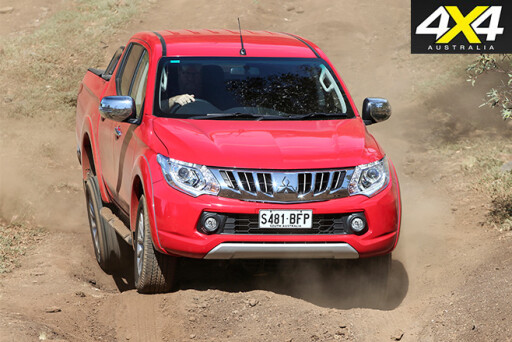 Mitsubishi sold 19,990 4x4 Tritons in 2014 and 805 more again in 2015. In both years the Triton ranked third overall in 4x4 sales. Seeing that evidence, you’d think that nothing much has changed from 2014 to 2015, but that’s not the case.
Mitsubishi sold 19,990 4x4 Tritons in 2014 and 805 more again in 2015. In both years the Triton ranked third overall in 4x4 sales. Seeing that evidence, you’d think that nothing much has changed from 2014 to 2015, but that’s not the case.
At the end of the first quarter in 2015 Mitsubishi introduced a new-generation model, the MQ, which replaced the MN model.
In creating the MQ, Mitsubishi took the previous MN, pulled it apart, and then put it back together with an all-new 2.4-litre engine, a new six-speed manual gearbox, a new transfer case, tweaked suspension and a slightly bigger and far more polished cabin. The five-speed automatic that was previously only available on the top-spec GLX-R model also became available across the range, relegating the old four-speed auto to history.
Towards the end of the previous MN’s model-life it sold well, partly due to heavy discounting. When the new MQ arrived, Mitsubishi dropped the discounting but still priced the new model sharply. Very sharply, in fact.
The Triton is unique among 4x4 utes, in a number of ways. First, it is a good deal smaller than most of its competitors and can’t match the class leaders in terms of payloads or towing capacity. The fact that most of the tray of the dual-cab model overhangs the rear axle is also a negative when it comes to carrying heavy loads. But the Triton is more manoeuvrable than most, thanks to its relatively short wheelbase and it has sporty feel to the way it steers and handles. Mid- and top-spec models also offer full-time 4x4 in the form of Mitsubishi’s ‘Super Select’ system, which also incorporates a 2WD mode. This adds greatly to the Triton’s functionality and safety.
The Triton’s strong sales are even more remarkable given that the model range is nowhere near as extensive as that of the Hilux or the Ranger. The exterior styling also hasn’t won many fans – especially the styling of the cartoon-like grille, but if you’re after value in a new 4x4 ute, the Triton is certainly the first place to start looking.
Specs: Mitsubishi Triton GLS
Engine: 2.4 litre 4-cyl turbo diesel
Max Power/Torque: 133kW/430Nm
Gearbox: five-speed automatic
4X4 System: dual-range full-time (+2WD)
Kerb Weight: 1950kg
GVM: 2900kg
Towing capacity: 3100kg
Fuel tank capacity: 75 litres
ADR fuel claim: 7.6 litres/100km
2015 SALES: 20,795
2014 SALES: 19,990
4. HOLDEN COLORADO All Torque
A steady improvement in sales in the past few years has seen Holden’s Colorado rise to number four in the hit parade
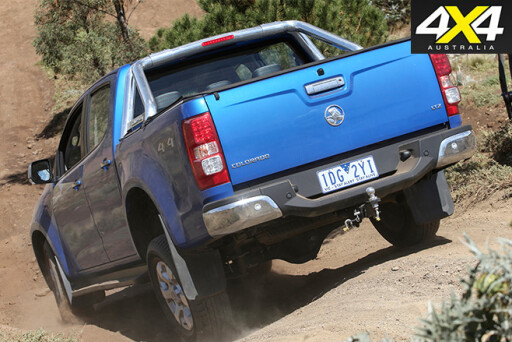 In the game of snakes and ladders that is the new 4x4 sales race, the Colorado was a winner in 2015, moving up from sixth spot in 2014 to fourth in 2015.
In the game of snakes and ladders that is the new 4x4 sales race, the Colorado was a winner in 2015, moving up from sixth spot in 2014 to fourth in 2015.
But this ‘win’ wasn’t entirely attributable to all the good work of the Colorado. In fact, the Colorado gained just 802 sales from 2014 to 2015, but, crucially, the Jeep Grand Cherokee and the Toyota Prado, which last year were fourth and fifth respectively, lost ground in 2015.
If both these wagons held their 2014 sales in 2015, the Colorado would have maintained its sixth-spot ranking.
This generation Holden Colorado arrived in 2012 and unlike the previous Colorado and the various Rodeos, it wasn’t a rebadged Isuzu but a General Motors product from the ground up. It was actually developed by a global GM team based in Brazil, although with plenty of input from Holden engineers and designers.
Since then, the Colorado has undergone a couple of tweaks, most recently for the 2014 model year, when the engine was upgraded and a new six-speed manual gearbox was added to the line-up. The Colorado also gained a raft of new safety and technology equipment, including trailer-sway control, rear park assist, and a reversing camera for the top-spec LTZ model.
The Colorado does well sales-wise due to brand loyalty, an extensive dealer network and an aggressive marketing campaign, but, frankly, it’s not a frontrunner in terms of refinement or how it drives.
What it does do, however, is offer plenty of performance, thanks to the 500Nm of torque that its VM Motori 2.8-litre diesel offers with the automatic gearbox. In fact, as an automatic, it’s the strongest performing of the 4x4 utes.
With the manual gearbox, maximum torque is pegged at 440Nm, although the engine feels no less toey despite the fact that the manual is geared very tall.
Not so good is the Colorado’s modest off-road performance, which is not helped by the fact that it’s one of the few popular 4x4 utes that’s not offered with a rear diff lock.
Specs: Holden Colorado LTZ
Engine: 2.8-litre 4-cyl turbo diesel
Max Power/Torque: 147kW/500Nm
Gearbox: six-speed automatic
4X4 System: dual-range part-time
Kerb Weight: 2053kg
GVM: 3100kg
Towing capacity: 3500kg
Fuel tank capacity: 76 litres
ADR fuel claim: 9.1 litres/100km
2015 SALES: 15,963
2014 SALES: 15,161
5. TOYOTA PRADO The Perennial
Although surpassed in sales by Jeep’s Grand Cherokee last year, the Prado is back as Australia’s most popular 4x4 wagon.
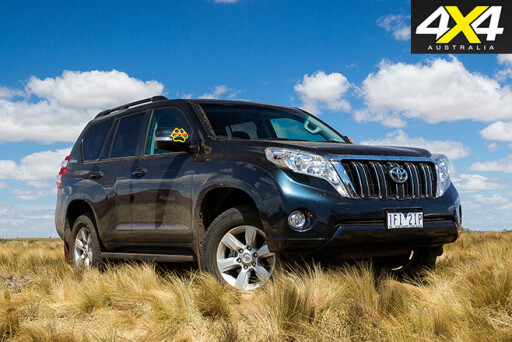 The 150 Series Prado arrived in 2009 and is nearing the end of its model life, so it’s doing well to be Australia’s most popular 4x4 wagon and number five on the overall 4x4 sales chart.
The 150 Series Prado arrived in 2009 and is nearing the end of its model life, so it’s doing well to be Australia’s most popular 4x4 wagon and number five on the overall 4x4 sales chart.
Mind you, it hasn’t been without its challenges, as last year it ran second to Jeep’s Grand Cherokee in terms of 4x4 wagon popularity, although it was still fifth in the overall rankings.Compared with 2014 sales, it did drop 857 sales in 2015, but at the same time the Grand Cherokee nose-dived, which allowed the Prado to retain fifth position overall.
2015 was important for the Prado, as it gained a new 2.8-litre diesel engine, a new six-speed automatic gearbox and some extra kit, including sat-nav as standard on the volume-selling GXL.
The 2.8-litre diesel replaced the 3.0-litre diesel that first saw service in the previous-generation 120 Prado in 2006 and is shared with the all-new Hilux and Fortuner. Meanwhile, the new six-speed automatic replaced the previous five-speed auto, while the six-speed manual was carried over unchanged.
The chief reason for the new diesel is up-coming emissions regulations, which will probably mean the adoption of SCR (ad-blue) technology, for which the 2.8 is ready, even if it’s not fitted at this stage. Swapping the 2.8 into the Prado also means production cost savings, given parts commonality with Hilux and Fortuner.
Regardless of the new engine and gearbox, which bring refinement more than performance improvements, the Prado remains a comfortable tourer and a capable off-roader that is hard to go past for those looking for a wagon.
This year will, however, be a pivotal year for the Prado, as it will come under serious threat from the new Ford Everest, which offers more equipment, better on-road dynamics and stronger performance for the same money.
When you throw the new Fortuner into the mix, the situation gets even more interesting. Will Fortuner sales cannibalise Prado sales, or will they merely weaken the Everest’s push into this potentially lucrative market?
Specs: Toyota Prado GXL
Engine: 2.8-litre 4-cyl turbo diesel
Max Power/Torque: 130kW/450Nm
Gearbox: six-speed automatic
4X4 System: dual-range full-time
Kerb Weight: 2290kg
GVM: 2900kg
Towing capacity: 2500kg
Fuel tank capacity: 150 litres
ADR fuel claim: 8.0 litres/100km
2015 SALES: 15,255
2014 SALES: 16,112
6. NISSAN NAVARA Alternate Thinking
The complete line-up of Nissan’s new NP300 Navaras is finally here.
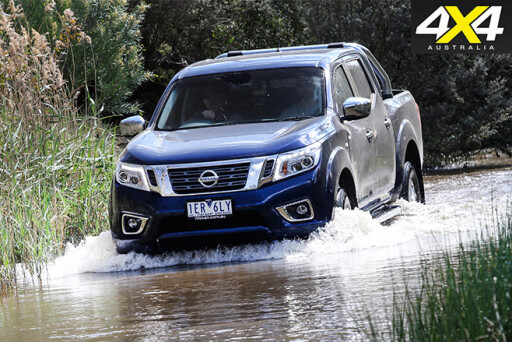 Despite selling 2521 fewer Navara 4x4s in 2015 than it did in 2014, the Navara moves up one spot in the top-ten 4x4 sales chart, thanks to the demise of Jeep’s Grand Cherokee. But that will bring no joy to Nissan, as the 17 per cent drop in Navara 4x4 sales is what really matters.
Despite selling 2521 fewer Navara 4x4s in 2015 than it did in 2014, the Navara moves up one spot in the top-ten 4x4 sales chart, thanks to the demise of Jeep’s Grand Cherokee. But that will bring no joy to Nissan, as the 17 per cent drop in Navara 4x4 sales is what really matters.
Nissan actually sold no fewer than three different generations of Navara during 2015, which must be some kind of record. For the first part of the year, Nissan sold both the D40 (which first appeared in late 2005) and the older, budget-priced D22 as an entry-level model, before the all-new NP300 was introduced mid-year. To make things even more complicated, the NP300 was initially only available as a dual-cab pick-up (with a coil-sprung rear end), and it wasn’t until very late in 2015 that Nissan completed the full NP300 range. The new models that arrived in November included single and extra-cab models and a dual-cab cab-chassis variant with a traditional leaf-sprung rear-end.
No doubt this would have left many potential Navara buyers somewhat confused and perhaps heading off to another dealership.
The NP300 was a long time coming, given the previous-generation D40 debuted 10 years ago. In designing the NP300, Nissan deliberately downsized instead of building a bigger ute to take on the likes of the Ford Ranger and the Volkswagen Amarok.
The Renault-sourced engines are also smaller (now 2.3 litres), although mid- and up-spec models use a bi-turbo arrangement (similar to the Amarok) to produce solid power and torque figures of 140kW and 450Nm. The single turbo version of the same engine used in the base-spec models claims 120kW and 403Nm. Gearboxes available are a six-speed manual or an optional seven-speed automatic.
Initial sales of the NP300 haven’t been setting the world on fire and no doubt Nissan will be hoping for a better year in 2016 now that the full range of NP300s is available.
Specs: Nissan Navara NP300 ST
Engine: 2.3 litre 4-cyl bi-turbo diesel
Max Power/Torque: 140kW/450Nm
Gearbox: seven-speed automatic
4X4 System: dual-range part-time
Kerb Weight: 1865kg
GVM: 2910kg
Towing capacity: 3500kg
Fuel tank capacity: 80 litres
ADR fuel claim: 7.0 litres/100km
2015 SALES: 12,272
2014 SALES: 14,793
7. JEEP GRAND CHEROKEE Yesterday’s Hero?
The Jeep Grand Cherokee’s meteoric sales rise has been matched by its plunge from grace.
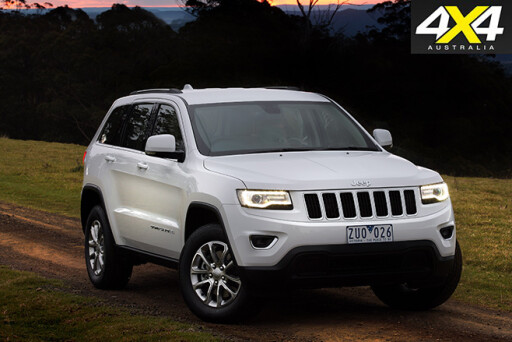 Jeep’s Grand Cherokee was the big loser in 2015. In the 4x4 sales chart it slid from fourth place in 2014 to seventh place in 2015 and is no longer Australia’s most popular 4x4 wagon.
Jeep’s Grand Cherokee was the big loser in 2015. In the 4x4 sales chart it slid from fourth place in 2014 to seventh place in 2015 and is no longer Australia’s most popular 4x4 wagon.
More significantly, its sales dropped by a whopping 4618 units (or 28 per cent) in 2015 compared with 2014. This is by far the biggest drop of any of the top-ten 4x4s, and is way in front of the Navara’s 2762 sales slide.
It’s hard to know why the Grand Cherokee has fallen from favour so quickly, although one theory is that people who see themselves as individuals often buy Jeeps and, as the Grand Cherokee has become more common in recent years, its appeal to this type of person has faded. Remember the self-deprecating “I bought a Jeep” campaign? Certainly the Grand Cherokee’s less-than-perfect build quality and niggling unreliability haven’t helped its cause.
Nor has the fact that this generation dates back to 2010 and it’s most recent facelift was in 2013.
So, if people aren’t buying Grand Cherokees, what are they buying? Well, that’s difficult to say, but they’re certainly not buying Toyota Prado’s, because the Prado’s sales decreased in 2015 compared with 2014 too. Some Grand Cherokee sales could have gone to Isuzu, which sold 1719 more MU-Xs than it did in 2014, or Holden, which sold 1536 more Colorado 7s in 2015 than in 2014. And while the Ford Everest was only on sale for a couple of months at the end of the year, it’s already managed to rack up 1245 sales.
Regardless of its declining popularity, the Grand Cherokee is still a great drive and one of the best back-road tourers going around. It has handling, performance and standard equipment that shame a Toyota Prado or a Land Rover Discovery, and it is still pretty handy off-road, even if it isn’t up to the all-terrain performance of those two.
Moving forward, it’s hard to see the Grand Cherokee going anywhere but backwards, given that it will be one year older and will come under increasing sales pressure from the Everest. A new-generation Grand Cherokee can’t come soon enough for Jeep.
Specs: Jeep Grand Cherokee CRD Laredo
Engine: 3.0-litre V6 turbo diesel
Max Power/Torque: 184kW/570Nm
Gearbox: eight-speed automatic
4X4 System: dual-range full-time
Kerb Weight: 2267kg
GVM: 2949kg
Towing capacity: 3500kg
Fuel tank capacity: 93.5 litres
ADR fuel claim: 7.5 litres/100km
2015 SALES: 11,964*
2014 SALES: 16,582*
*Sales figures include a small percentage of 4x2 models.
8. ISUZU D-MAX The Quiet Achiever
Largely unnoticed in the top ten, the Isuzu D-Max’s sales continue to grow strongly.
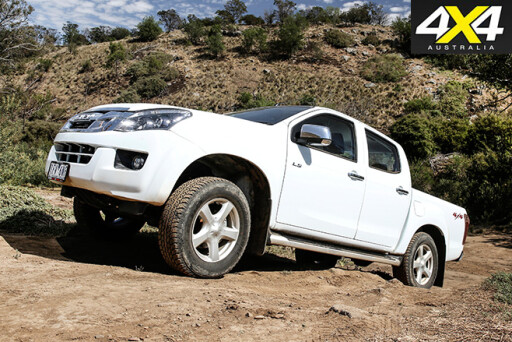 Isuzu Ute Australia sold 1022 more D-Max 4x4s in 2015 than in 2014. That still ranks it number eight on the list of the top-ten best-selling 4x4s – which is where it ranked in 2014. This is nevertheless a 10 per cent jump in sales, but in a highly competitive market that saw the arrival of no fewer than five new or facelifted utes in 2015, the D-Max’s sales are still impressive, given the D-Max remains unchanged.
Isuzu Ute Australia sold 1022 more D-Max 4x4s in 2015 than in 2014. That still ranks it number eight on the list of the top-ten best-selling 4x4s – which is where it ranked in 2014. This is nevertheless a 10 per cent jump in sales, but in a highly competitive market that saw the arrival of no fewer than five new or facelifted utes in 2015, the D-Max’s sales are still impressive, given the D-Max remains unchanged.
What is even more remarkable is the fact that Isuzu Ute Australia was only established in 2008, so the brand has come a long way in a very short time. Of course, Isuzu utes have been sold in Australia for a long time, but they were hidden behind Holden badges, a fact that seems to escape many people.
This generation D-Max arrived here in 2012 and has remained largely unchanged in the intervening period, save for upgrades to safety and towing ratings. The ladder chassis and body shell of this D-Max is essentially a GM design and is shared with the current Colorado, but the D-Max has its own engine, gearbox(s), rear axle, suspension tune, external body panels and interior fitout.
The D-Max’s 3.0-litre diesel is a revised version of what was used in the previous-generation D-Max and Colorado, and in the last of the Holden Rodeos. Consequently, it is a well-proven unit. Likewise, the D-Max’s five-speed automatic gearbox has a proven track record, as it’s essentially the same gearbox that was used in the Toyota Prado up until recently; it was also used in the original petrol 200 Series.
The fact that the D-Max’s powertrain is so well-proven is its real strength and that’s what makes it a good ownership proposition even though many competitor utes have more advanced designs. The D-Max is also sharply priced right across the range and the top-end models are especially well equipped for the asking price.
Specs: Isuzu D-Max LS-U
Engine: 3.0-litre 4-cyl turbo diesel
Max Power/Torque: 130kW/380Nm
Gearbox: five-speed automatic
4X4 System: dual-range part-time
Kerb Weight: 1945kg
GVM: 2950kg
Payload: 1005kg
Towing capacity: 3500kg
GCM: 5950kg
Fuel tank capacity: 76 litres
ADR fuel claim: 8.1 litres/100km
2015 SALES: 11,301
2014 SALES: 10,279
9. MAZDA BT-50 Built Tough
Given the strong sales of Ford’s Ranger, the mechanically similar BT-50 really should be doing better than it is.
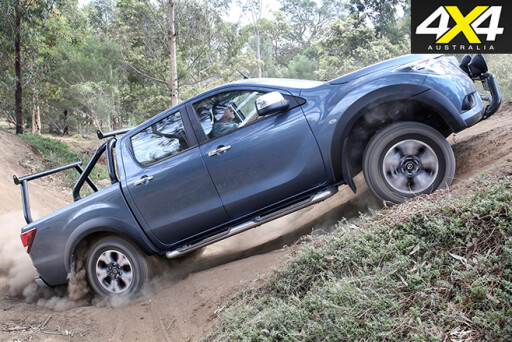 Mazda’s BT-50 was ranked ninth for 4x4 sales in 2014 and it retained that ranking in 2015, although it achieved a modest 368 sales increase, up from 8312 to 8680.
Mazda’s BT-50 was ranked ninth for 4x4 sales in 2014 and it retained that ranking in 2015, although it achieved a modest 368 sales increase, up from 8312 to 8680.
The interesting thing here is that the BT-50 is a close cousin to Ford’s Ranger, but for every BT-50 Mazda sells, Ford sells nearly three Rangers. Now, Mazda may be happy to sell the BT-50 in those numbers, as the marque is enjoying record sales elsewhere, thanks to the popularity of its CX-5 and CX-3 SUVs and its Mazda 3 and Mazda 6 passenger cars.
The BT-50 came out in late 2011, about the same time as the Ford Ranger, and in their original guise the two were almost mechanically identical. Aside from the obvious styling and equipment differences, the two varied only in their steering-rack ratios and suspension damper calibration.
All of that changed last year when both the BT-50 and the Ranger underwent mid-life makeovers, but to vastly different degrees.
Where Ford introduced a raft of mechanical changes to its Ranger to improve its performance, off-road ability, driving feel and refinement, Mazda’s rework of the BT-50 was limited to exterior styling, a new dashboard for the mid- and top-spec models, and some equipment changes. The only mechanical change of note was a new linkage for the six-speed manual, designed to address the previously vague shift action.
At a time when ute engines are being downsized to smaller and smaller four-cylinder designs, the BT-50 (and the Ranger) stand out with their relatively large-capacity (3.2-litre), in-line, five-cylinder diesel. On the road the ‘big’ five is low-revving and has an easy and relaxed feel to it.
In fact, the BT-50 is a big ute all over – big cabin; big wheelbase; big GVM and payloads; and a class-leading towing capacity.
It is just a pity the BT-50’s recent facelift didn’t bring the in-depth changes that have made the Ranger a far better ute than it was in its original guise.
Specs: Mazda BT-50 XTR
Engine: 3.2-litre 5-cyl turbo diesel
Max Power/Torque: 147kW/470Nm
Gearbox: six-speed automatic
4X4 System: dual-range part-time
Kerb Weight: 2118kg
GVM: 3200kg
Payload: 1082kg
Towing capacity: 3500kg
GCM: 6000kg
Fuel tank capacity: 80 litres
ADR fuel claim: 9.2 litres/100km
2015 SALES: 8680
2014 SALES: 8312
10. TOYOTA LANDCRUISER 200 King Cruiser
Nothing beats a Land Cruiser 200 when it comes to go-anywhere comfort and versatility.
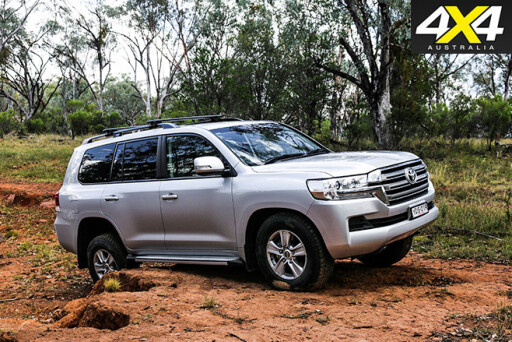 Toyota’s 200 Series Land Cruiser has been around for more than eight years, but despite its age and a relatively high price tag, it continues to sell well. In fact, in 2015 its sales were marginally better than in 2014 and it’s the only wagon in the 4x4 top ten to actually increase sales from 2014 to 2015.
Toyota’s 200 Series Land Cruiser has been around for more than eight years, but despite its age and a relatively high price tag, it continues to sell well. In fact, in 2015 its sales were marginally better than in 2014 and it’s the only wagon in the 4x4 top ten to actually increase sales from 2014 to 2015.
The 200 Series benefits greatly from not having any direct competition, thanks to the fact that Nissan doesn’t offer a diesel version of its Y62 Patrol. In fact, while Toyota sold 8251 200s in 2015, total Patrol sales (combined Y61 and Y62) totalled just 1875. The 200 actually gets more competition from the Land Rover Discovery (2915 sales in 2015) than it does from the Patrol, which was the Land Cruiser’s key rival in the past.
In late 2015, the 200 received refreshed styling and some mechanical changes, which will no doubt see it through to the arrival of the new-generation Land Cruiser, which is well-advanced in its development and is due either late next year or in 2018.
The mechanical changes include new piezo injectors (replacing the electro-mechanical injectors used previously) and a particulate filter for the diesel V8. These changes have bought about an improvement in ADR fuel economy and exhaust emissions and have increased the claimed maximum power from 195kW to 200kW. At the same time, the largely unloved but still sweet 227kW petrol V8 has also been tweaked for better economy and emissions.
Meanwhile, a new grille, headlights, a V-shaped bonnet, front bumper and front mudguards distinguish the facelifted 200. At the rear there are new high-visibility LED taillights, among other changes.
The top-of-the-range Sahara also gained four external cameras that can help the driver place the vehicle in tight parking situations and in difficult off-road situations.
Regardless of these changes, the 200’s practicality as an ownership proposition underpins its continuing popularity. It works on and off the road, offers proven reliability and also has Australia’s biggest dealer network to back it up.
Specs: Toyota LandCruiser 200
Engine: 4.5-litre V8 turbo diesel
Max Power/Torque: 200kW/650Nm
Gearbox: six-speed automatic
4X4 System: dual-range full-time
Kerb Weight: 2665kg
GVM: 3300kg
Towing capacity: 3500kg
Fuel tank capacity: 138 litres
ADR fuel claim: 9.5 litres/100km
2015 SALES: 8251
2014 SALES: 8154
To compare against the previous year's top sellers, check out Australia's best selling 4x4s in 2014.

COMMENTS